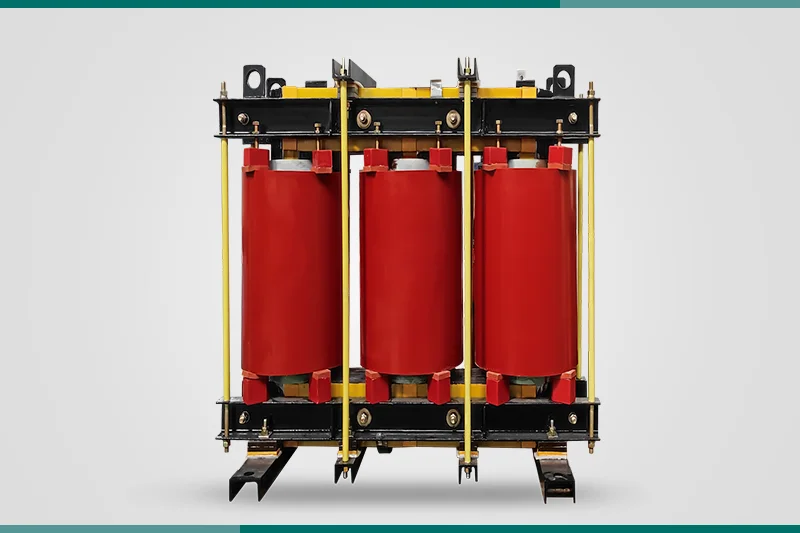Rectifier transformers are widely used in various industries, mainly divided into lighting, machine tool appliances, mechanical and electronic equipment, medical equipment, rectifiers and so on. Product performance can meet various special requirements of users. The electrochemical industry is the industry that applies the most rectification. Electrolyze non-ferrous metal compounds to produce aluminum, magnesium, copper, and other metals. Electrolyze salt to produce chlor-alkali and electrolyze water to produce hydrogen and oxygen.
The phase shift method is to use the two windings connected by the quantity and angle on the secondary side, which can double the pulse wave number of the rectifier furnace.
For high-power rectification equipment, the number of pulse waves is also required and the number of pulse waves is 18, 24, 36, and other applications are increasing. This requires a phase shift winding on the primary side of the rectifier transformer to perform phase shifting. There are three ways to connect the phase-shift winding and the main winding. The voltage regulation range of rectifier transformers used by transformer manufacturers for the electrochemical industry is much larger than that of electric furnace transformers. For chemical salt electrolysis, the voltage regulation range of rectifier transformers is usually 56% -105%. For aluminum electrolysis, the voltage regulation The range is usually 5%-105%. Commonly used voltage regulation methods like electric furnace transformers are variable magnetic flux voltage regulation, series transformer voltage regulation and auto-coupled voltage regulator voltage regulation. In addition, due to the characteristics of the rectifier element, the phase angle of conduction of the silicon rectifier element can be directly controlled on the valve side of the rectifier furnace, and the average value of the rectified voltage can be smoothly adjusted. This type of voltage regulation method is called phase-controlled voltage regulation. To realize phase-controlled voltage regulation, one is the use of a crystal valve, and the other is a self-saturated reactor. The self-saturated reactor is basically composed of an iron core and two windings. One is a working winding, which is connected in series to a rectifier transformer. A load current flows between the secondary winding and the rectifier; the other is a DC control winding, which provides a DC current from another DC power source. The main principle is to use the non-linear change of the ferromagnetic material to make the working winding reactance value very high. big change. By adjusting the DC control current, the phase control angle can be adjusted, thereby adjusting the average value of the rectified voltage.

Rectifier transformers are used as power transformers for rectifiers. Their role is to provide AC power to the rectifier which then converts AC power to DC power for DC power supply. Mainly used in metallurgical, chemical, locomotive traction and transmission industries. The rectifier transformers has energy saving, low loss, low noise, strong resistance to shock and short circuit. Strong overload capacity, compact structure, small size, reliable power supply, etc.
The performance characteristics of rectifier transformers
(1) Stable electrical performance: The product determines the reasonable and reliable insulation level and insulation model according to the load condition of the rectifier transformer based on the load characteristics and grid voltage fluctuations and atmospheric overvoltage conditions which fully guarantees that the electrical performance of the product is reliable and stable. Product environmental safety factor ≥ 1.67.
(2) High degree of dynamic stability: The windings of the rectifier transformers have high mechanical strength and strong anti-burst ability to meet the extremely harsh load environment. During the design and manufacturing process, the sources of dynamic instability caused by magnetic leakage of the transformer or abnormal transportation may be eliminated. The product has high dynamic stability. High impedance, 30% higher impedance than power transformers of the same capacity to suppress di / dt and effectively protect rectifier components.

(3) Good thermal stability: Advanced product design, strictly control the temperature rise of the hot parts and hottest points of the product, and leave a sufficient margin for temperature rise. If necessary, add an axial oil channel in the coil. According to the coil For the load loss value, the cooling method is selected and the oil flow is reasonably distributed to achieve the best cooling effect. The main temperature rise indicators are at least 5 ° C lower than the national standard. The coil and lead are made of copper wire, and the current density is selected to be low.
(4) Strong overload capacity: The rectifier transformers has strong overload capacity and over-voltage capability that can run safely for a long time under the rated load and can run safely at full load for a long time under the condition of 110% over-voltage (ambient temperature 40 ° C). The terminal connected to the transformer and the motor can withstand 1.5 times the rated current for 5S. Product design and manufacturing fully consider the load characteristics, and meet the overload requirements from various aspects such as temperature rise, insulation performance and accessories selection.
(5) Superior performance index: The design and manufacturing value of no-load current is lower than the national standard S9 series transformers of the same capacity which is sufficient for the economy and reliability of users.
(6) The power saving effect is obvious and the noise is low (<65dB).
(7) The structure is simplified and the appearance is beautiful. The fuel tank adopts anti-leakage design technology to prevent fuel tank leakage.




 10-30~5000_20 Series Dry-type Transformer.webp)
10, SC(B)11-30~4000_10 Series Dry-Type Transformer.webp)
Leave A Comment